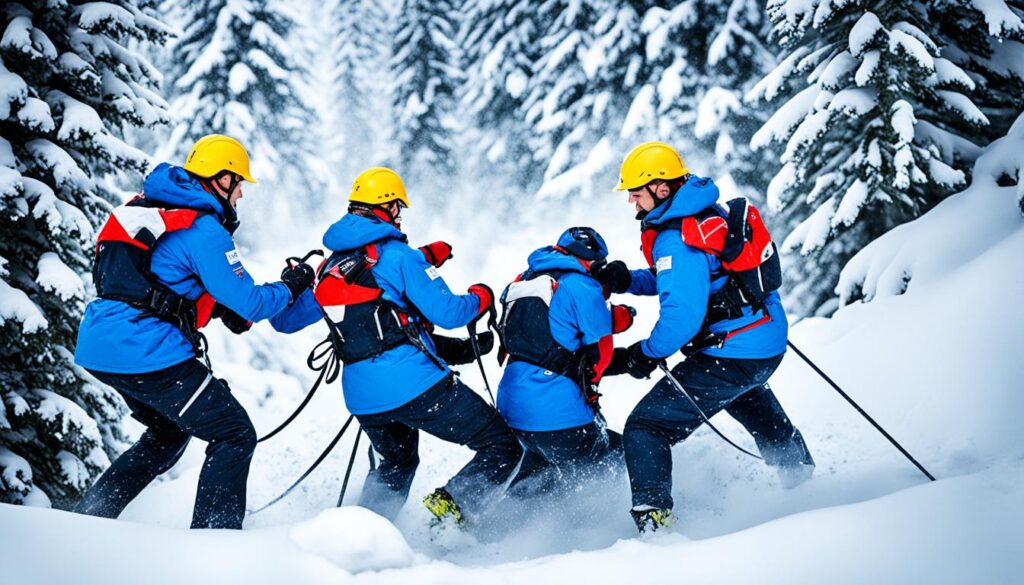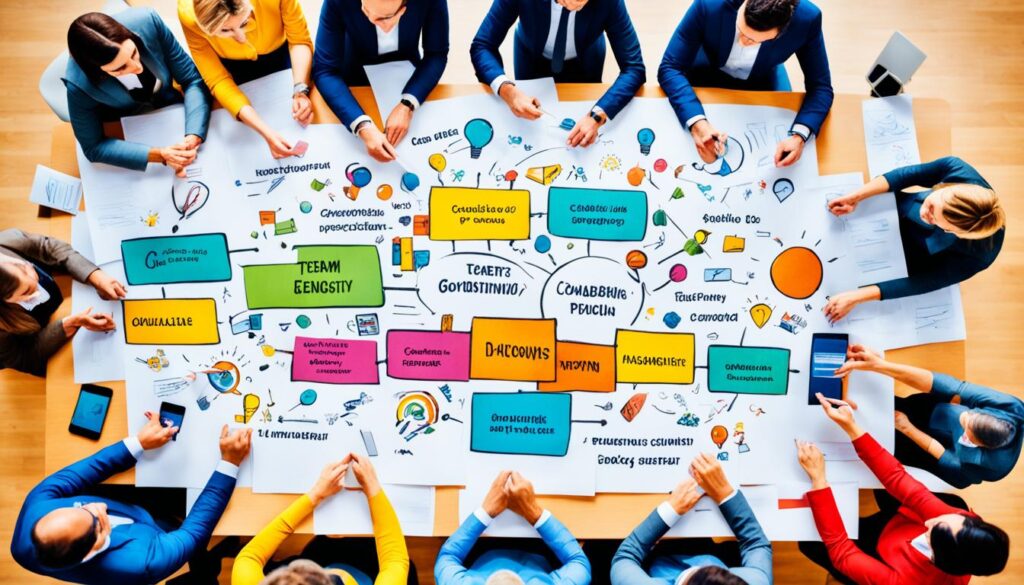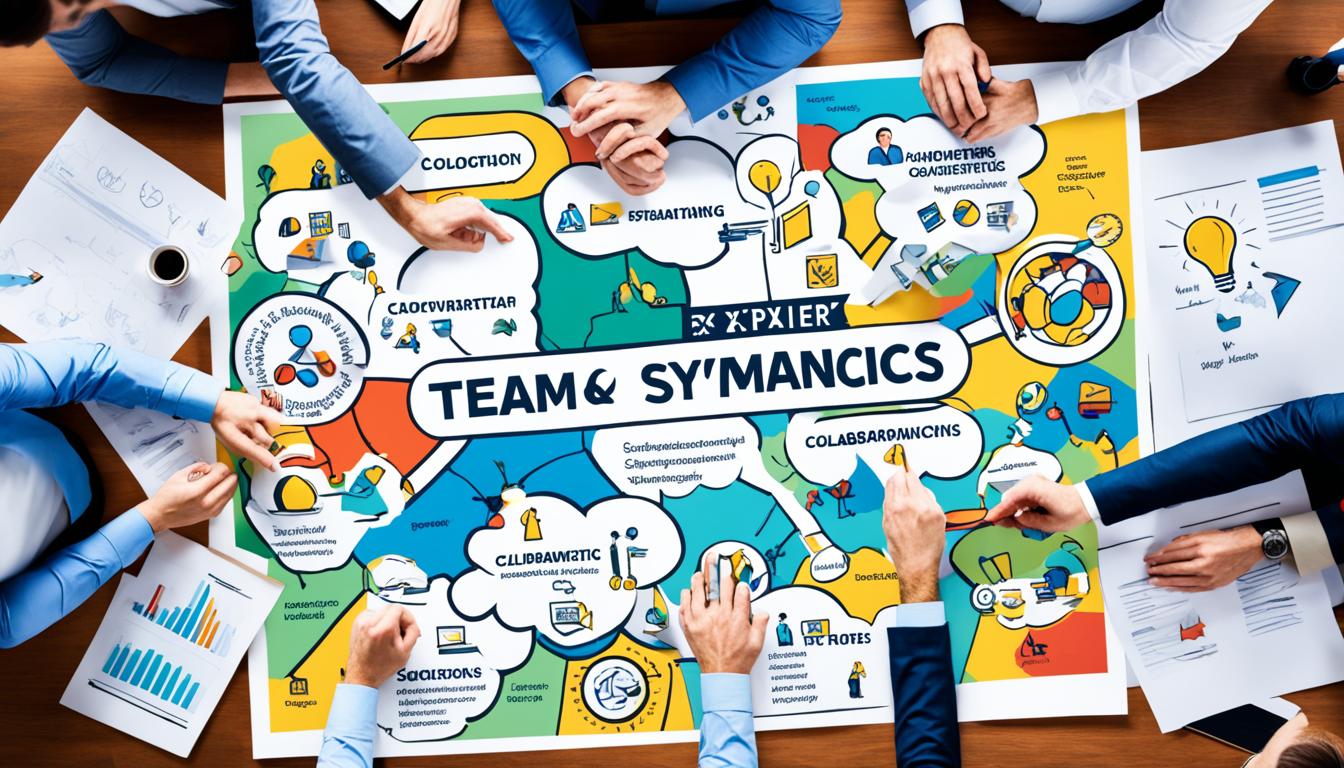Imagine you’re part of a team working on a challenging project. The goal is ambitious, the timeline is tight, and the pressure is high. As the days go by, you start to notice something fascinating – each team member brings a unique set of skills and perspectives to the table. There’s the “go-getter” who excels at networking and resource acquisition, the “mediator” who effortlessly keeps the team connected and motivated, the “organizer” who ensures every task is completed on time, and the “creative mastermind” who sparks innovative ideas.
This story exemplifies the essence of team dynamics and the power of leveraging diverse team collaboration roles. In order to achieve success in any project, effective teamwork skills are crucial. This includes understanding and utilizing the different roles that individuals play within a team.
Team dynamics job description expert roles provide a framework for understanding the behaviors and contributions of team members. Dr. Meredith Belbin identified nine distinct roles, each with its specific strengths and weaknesses, that influence team progress. These roles include the Resource Investigator, Teamworker, Co-ordinator, Plant, Monitor Evaluator, Specialist, Shaper, Implementer, and Completer Finisher.
Key Takeaways:
- Team dynamics job description expert roles are crucial for fostering effective teamwork and collaboration.
- Understanding the strengths and weaknesses of each team member’s role is essential for enhancing communication and collaboration.
- Belbin Team Role assessments provide a sanctioned way to determine individual strengths and weaknesses.
- Building a balanced team composition is key to unlocking high team performance.
- Regular assessments and adjustments can ensure ongoing growth within the team.
Finding Your Belbin Team Role Strengths and Weaknesses.
To determine your Belbin Team Role strengths and weaknesses, it is essential to complete the official Belbin Self-Perception Inventory and receive a Belbin Individual report. This sanctioned method provides comprehensive insights into your preferred team roles and helps identify areas where you excel and areas that may require improvement. The Belbin Individual report offers a detailed analysis of your strengths and weaknesses, enabling you to better understand your unique contributions to a team.
Additionally, feedback from colleagues through the Observer Assessment can further enhance your understanding of your team role tendencies. By gaining insights from others who have observed your behavior in a team setting, you can gain a more comprehensive perspective on your strengths and weaknesses, discovering blind spots and opportunities for growth.
“The Belbin Individual report provides valuable insights on team role strengths and weaknesses, enabling individuals to understand their unique contributions to a team.” – Dr. Meredith Belbin
It is important to note that most individuals display a preference for two or three specific Belbin Team Roles. These preferences may evolve over time as individuals gain new skills and experiences. Therefore, it is beneficial to regularly reassess your Belbin Team Role preferences to align with your evolving strengths and weaknesses.
Gaining a deep understanding of your own team role tendencies allows you to better communicate and collaborate with your team members. By recognizing and appreciating the diverse strengths and weaknesses within a team, you can leverage the full potential of each individual, ultimately leading to improved team performance and outcomes.
Benefits of Belbin Individual Report and Observer Assessment:
- Insight into your preferred Belbin Team Roles
- Identification of strengths and weaknesses
- A comprehensive analysis of your contributions to a team
- Enhanced self-awareness and personal growth
- Better communication and collaboration within teams
Belbin Team Role Strengths and Weaknesses:
| Belbin Team Role | Strengths | Weaknesses |
|---|---|---|
| Resource Investigator | Outgoing, enthusiastic, explores opportunities | May lose interest in ongoing tasks, can be over-optimistic |
| Teamworker | Cooperative, diplomatic, listens to others | Avoids confrontations, indecisive under pressure |
| Co-ordinator | Confident, mature, clarifies goals | Can be seen as controlling, may delegate too much |
| Plant | Creative, imaginative, solves complex problems | May ignore details, too focused on ideas |
| Monitor Evaluator | Analytical, discerning, objective judgment | Can be overly critical, may lack inspiration |
| Specialist | Expert knowledge, skills in specialized areas | Could be narrow-minded, struggles with broader tasks |
| Shaper | Determined, dynamic, drives team forward | May offend others, can be dominant |
| Implementer | Disciplined, reliable, turns ideas into action | May resist change, inflexible in certain situations |
| Completer Finisher | Precise, attention to detail, ensures tasks are completed | May worry excessively, reluctant to delegate |
Understanding the strengths and weaknesses associated with each Belbin Team Role facilitates effective team composition and task allocation. By leveraging the strengths of each team member, you can foster a balanced team environment that maximizes collaboration, creativity, and efficiency.
Importance of Team Roles in Extreme Environments.
Research has shown that team roles play a crucial role in teams operating in extreme environments, where mistakes can have life-threatening consequences. In these high-pressure situations, the performance of the team is directly tied to the effective execution of task roles and the maintenance of social roles.
Task Roles
Task roles, such as coordinator, boundary spanner, team leader, evaluator, and critic, are instrumental in achieving team objectives and ensuring successful outcomes. These roles focus on the execution and coordination of tasks, fostering clear communication, and maximizing team efficiency. In extreme environments, task roles help streamline operations and minimize errors that can have severe consequences.
Social Roles
Social roles, including team builder, nurturer, harmonizer, entertainer, and others, are equally vital in extreme teams. These roles contribute to the socioemotional well-being of the team, fostering camaraderie, morale, and team cohesion. In high-stress situations, social roles help alleviate tension, boost team spirit, and maintain a positive atmosphere, enabling team members to perform at their best.
Adaptability in Role Enactment
It’s important to note that the enactment of both task and social roles may vary based on the duration of the mission. In long-duration extreme environments, the emphasis on certain roles may shift over time as needs and challenges evolve. Flexibility and adaptability in role enactment are crucial for team members to meet changing demands and ensure sustained team performance.

Creating a Balanced Team.
Building a balanced team is essential for maximizing productivity and achieving successful outcomes. To create such a team, it is crucial to understand the strengths and weaknesses of each team member. By assessing individual Belbin Team Role strengths, team leaders can effectively assign responsibilities according to each member’s abilities.
Regular assessments of team dynamics can help identify any gaps in the team’s composition, allowing for adjustments in roles and responsibilities as needed. This proactive approach ensures that tasks are distributed evenly and align with the skills possessed by each team member.
Uncovering the strengths and weaknesses of the team not only helps ensure a balanced workload but also promotes effective collaboration. By leveraging each team member’s unique strengths, it becomes possible to optimize team performance and enhance overall productivity.
Assessing Team Dynamics
Assessing team dynamics involves evaluating the interactions and relationships among team members. This assessment provides valuable insights into how the team collaborates, communicates, and makes decisions. Understanding team dynamics is key to fostering a positive and productive working environment. By identifying strengths and weaknesses within the team, leaders can implement targeted strategies to enhance collaboration and address any underlying issues. Furthermore, mastering team dynamics in feedback allows team members to receive constructive input in a way that promotes growth and development. Ultimately, prioritizing the evaluation of these dynamics can lead to improved performance and a stronger sense of cohesion among team members.
“Individual commitment to a group effort — that is what makes a team work, a company work, a society work, a civilization work.”
– Vince Lombardi
By analyzing team dynamics, team leaders can identify areas where improvements can be made. This may involve addressing conflicts, enhancing communication channels, or establishing effective decision-making processes.
Regular team assessments help leaders track the progress of team dynamics over time. By reviewing and updating team roles as necessary, teams can adapt to changes and ensure that they remain efficient and effective.

A balanced team thrives on the diverse strengths and capabilities of its members. Assessing team dynamics and creating a balanced team composition enables organizations to tap into each individual’s unique attributes. This not only enhances team cohesion but also sets the stage for exceptional performance and growth.
Conclusion.
Effective team dynamics are vital for fostering collaboration, improving communication, and enhancing leadership within groups. By understanding the different team roles and how they contribute to overall performance, organizations can build highly effective teams capable of achieving their business objectives. Leveraging the strengths of each team member and creating a balanced team composition is key to maximizing performance.
To further enhance teamwork and productivity, organizations should implement proven team building techniques. These techniques can include team building activities, fostering open and transparent communication, promoting trust and respect among team members, and encouraging a positive team culture. Regularly assessing team dynamics and making necessary adjustments helps ensure continuous improvement and growth within the team.
By prioritizing team dynamics and investing in team building initiatives, organizations can improve team performance and drive greater overall success. Effective team collaboration, enhanced communication, and strong leadership abilities are foundations for building high-performing teams that can tackle any challenge and deliver exceptional results.
FAQ
Can you explain what team dynamics job description entails?
Team dynamics job description involves understanding the roles and responsibilities of team members within a group setting. It includes defining team collaboration roles, effective teamwork skills, and fostering effective communication and collaboration.
How can I determine my Belbin Team Role strengths and weaknesses?
The only sanctioned way to determine your Belbin Team Role strengths and weaknesses is by completing the official Belbin Self-Perception Inventory and receiving a Belbin Individual report. Additional insights can be gained through feedback from colleagues via the Observer Assessment.
Are team roles important in extreme environments?
Yes, research has shown that team roles are crucial in teams operating in extreme environments. Both task roles and social roles are important for maintaining team performance and socioemotional health, especially in high-stakes situations where mistakes can have life-threatening consequences.
How can I create a balanced team?
Building a balanced team requires understanding each team member’s strengths and weaknesses. This can be achieved by assessing individual Belbin Team Role strengths and using this information to assign responsibilities accordingly. Regular assessments can help identify gaps in team composition and adjust roles and responsibilities as needed.
What are some team building techniques to improve team performance?
Team building techniques can include activities that promote communication, trust, and collaboration among team members. These can range from team-building exercises to workshops and retreats aimed at improving teamwork and productivity. Regularly assessing and addressing team dynamics can also contribute to improved team performance. Additionally, incorporating open feedback sessions can help address any underlying trust issues in leadership, allowing team members to voice their concerns in a safe environment. By fostering an atmosphere of transparency, teams are more likely to develop deeper connections and enhance their collaborative efforts. Ultimately, the focus on building strong relationships can lead to greater overall success and satisfaction within the team.


